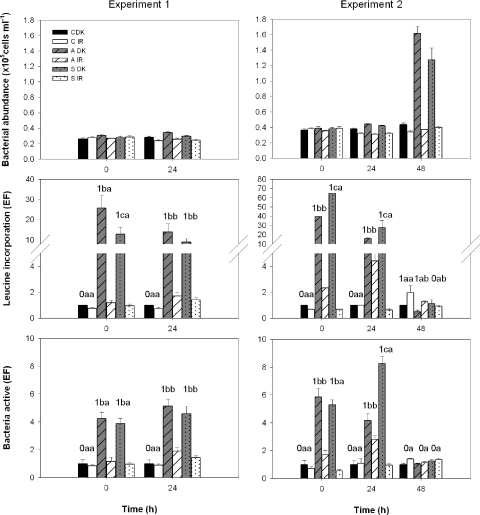Fig. 1.
Temporal changes in bacterial abundance (top), bulk leucine incorporation (middle) and active bacteria (bottom) during the experiment with natural (left) and simulated solar radiation (right). Activity parameters are expressed as enhancement factor (EF = leucine incorporation rates or percentage of active cells in a given treatment versus leucine incorporation rates or percentage of active cells in the dark control). The first letter in the legend code corresponds to the DOM type: C is control, A is algal-derived DOM and S is soil-derived DOM, whereas the last two letters refer to the exposure conditions, either dark (DK) or pre-irradiated (IR). The number and letter code above the bars summarizes the results of the post hoc all pairwise multiple comparison test used to detect significant differences among DOM types and exposure conditions. The number indicates a significant (1) or non-significant (0) difference between exposure conditions for a given DOM type, whereas a different letter indicates a significant difference among DOM types at a given exposure condition. Comparisons were performed by the Holm–Sidak method with an overall significance level of 0.05. Values are mean of three replicates ± 1 SD.

